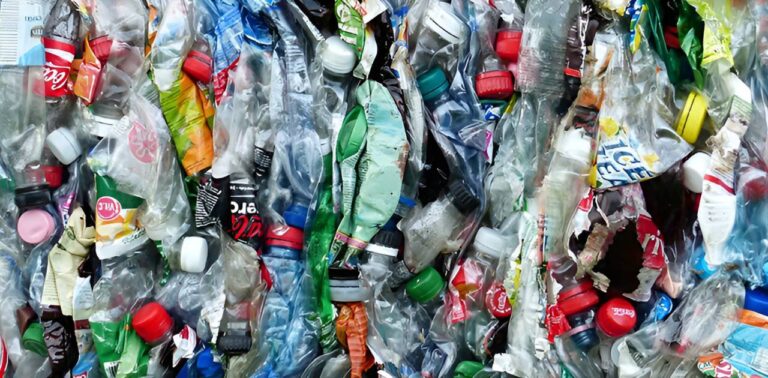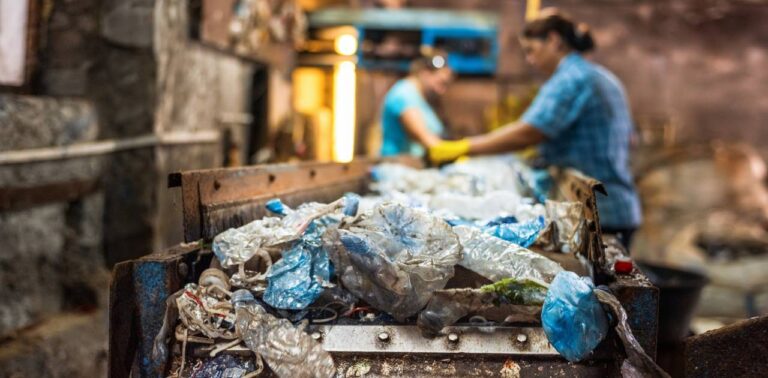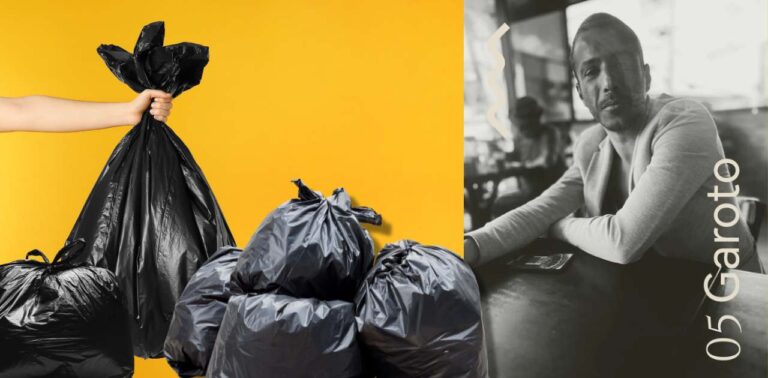Advertisements
Plastic recycling plays a crucial role in preserving the environment. However, for this process to be effective, it is essential to separate the different types of plastics. This initial step, which may seem simple, faces challenges due to the diversity of plastic materials used in our daily lives. Each type of plastic has unique characteristics that influence its recyclability, and therefore it is essential to understand these differences to ensure the recycling process is successful.

Thermoplastics: Versatility and Recyclability
Thermoplastics are widely used in a variety of products due to their ability to be reprocessed multiple times. When heated, this type of plastic softens and can be remolded, allowing it to be reused in new products. Thermoplastics are divided into several categories, each with specific applications and varying levels of ease of recycling.
Among the types of plastics that belong to this category, low-density polyethylene (LDPE) and high-density polyethylene (HDPE) stand out. LDPE is often used in plastic bags, films and flexible packaging. HDPE is more rigid and resistant, and is used in products such as detergent bottles and plumbing pipes. Both types of polyethylene are highly recyclable, contributing significantly to the reduction of plastic waste.
Another example of thermoplastic is polyvinyl chloride (PVC), used in products such as pipes and cable sheaths. Although PVC is recyclable, the process is more complex due to the presence of additives that can make it difficult to process. Therefore, the correct separation of this material is crucial to avoid contamination during recycling.
Polystyrene (PS) is another common thermoplastic found in products such as food packaging and disposable cups. Its recyclability, however, is limited due to its fragility and the fact that it is often contaminated with food waste. However, when properly separated, PS can be transformed into new products such as moldings and thermal insulation.
Thermosets: Challenges in Recycling
Unlike thermoplastics, thermosets cannot be remolded after the initial curing process. Once molded, these plastics retain their shape permanently, which presents a significant challenge for recycling. However, despite this limitation, thermosets still have important applications and can be reused in other ways.
A classic example of a thermoset is Bakelite, one of the first synthetic plastics created, widely used in electrical and electronic components due to its resistance to heat and wear. Other examples include polyurethanes (PU), used in upholstery foams and shoe soles, and polyesters, found in fiberglass-reinforced roof tiles.
Although these materials cannot be recycled in the traditional way, they can be processed for use as inert filler after grinding. This ground material can be incorporated into other compositions, such as asphalt, promoting reuse and avoiding the improper disposal of these types of plastics.
The Role of Different Types of Plastics in the Environment
Understanding the different types of plastics and their properties is essential to improving recycling practices and, consequently, minimizing environmental impact. The improper production and disposal of plastics has been a growing concern, with large volumes of plastic waste accumulating in landfills and oceans. Therefore, effective recycling of different types of plastics is essential to reduce the amount of waste ending up in the environment.
Thermoplastics, due to their ability to be reprocessed, play an important role in the circular economy. Products made from materials such as LDPE, HDPE, PVC and PET can be recycled multiple times, reducing the need for new plastics and saving natural resources. Correctly separating these materials during the recycling process ensures that they are reused efficiently.
On the other hand, thermosets, while more challenging to recycle, can still contribute to sustainability. Reusing these materials in secondary applications, such as asphalt mixes, helps minimize waste and reduce the demand for new materials. So even plastics that cannot be recycled conventionally can still be part of an environmentally responsible solution.
How to Classify Plastics
The type of material can be identified by the code corresponding to the resin used or the predominant ones when mixing, according to the system shown below:
 PET PET | PET – Polyethylene terephthalate Resin application: bottle of soft drink (carbonated), water, edible oil and food and beauty product packaging, etc. Recycled use: textile industry, fiber for carpets and upholstery, accessories and various objects, etc. |
 HDPE HDPE | HDPE – High Density Polyethylene Resin application: yogurt bottle, milk bottle, juice bottle, cleaning product packaging, ice cream tub, shampoo bottle, garbage bag, toys, etc. Recycled use: packaging of cleaning products, engine oil, sewer pipes, conduits, etc. |
 PVC PVC | PVC – Polyvinyl chloride (or polyvinyl chloride) Resin application: stretch film, hygiene product bottle, blister, mineral water bottle, blood bag, footwear industry, etc. Recycled use: Garden hose, sewer pipes, traffic cones, cables in general, etc. |
 PP PP |
PP – Polypropylene |
 PS PS |
PS – Polystyrene |
 OTHERS OTHERS | In this group are classified other types of plastics, such as ABS/SAN, EVE, SHOVEL, etc. Resin application: are usually found in technical and engineering parts, shoe soles, sports equipment, bodies of computers and telephones, CDs, etc. Recycled use: if mixed, they can be used in plastic wood, energy recycling, etc. |
The type of material can also be identified by its density or even by the material's flame test. Any material with a density greater than 1 g/cm3 (water density) floats in water, the rest settles. As for flame and odor, they have the following characteristics:
Resin | Flame Test | Observation | Odor | Melting Point Ripening | Density g/cm3 |
| Low density polyethylene | Blue Flame Yellow vertex | It drips like a candle | Candle smell | 105 | 0,89 0,93 |
| High density polyethylene | Blue Flame Yellow vertex | It drips like a candle | Candle smell | 130 | 0,94 0,98 |
| Polypropylene | Yellow flame, crackling when burning, sooty smoke | It drips like a candle | Aggressive Smell | 165 | 0,85 0,92 |
| ABS | Yellow flame, crackling when burning, sooty smoke | Softens and drips | Styrene monomer | 230 | 1,04 1,06 |
| SAN | Just like PS and ABS, but less sooty smoke | Soften and Drip | Burnt rubber | 175 | 1,04 1,06 |
| Polyacetal | Smokeless blue flame with spark | Softens and bubbles | Styrene monomer | 130 | 1,08 |
| Cellulose acetate | Yellow flame, sparks burning | Be careful when smelling | Formaldehyde | 175 | 1,42 1,43 |
| Cellulose butyrate acetate | Blue flame sparking | – | Acetic acid | 230 | 1,25 1,35 |
| PET | Yellow flame, smoke but spark | – | Rancid butter | 180 | 1,15 1.25 |
| Vinyl acetate | Greenish yellow flame | – | – | 255 | 1,38 1,41 |
| Rigid PVC | Yellow flame, green vertex | Self-extinguishing flame | – | 127 | 1,34 1,37 |
| Flexible PVC | Yellow flame, green vertex | Self-extinguishing flame | Smell of chlorine | 150 | 1,19 1,35 |
| Polycarbonate | Decomposes, sooty smoke with shine | Self-extinguishing flame | Smell of chlorine | 150 | 1,19 1,35 |
| Polyurethanes | Lots of smoke | – | Acre | 230 | 1,20 1,22 |
| PTFE | It deforms | Self-extinguishing flame | – | 205 327 | 1,21 2,14 2,17 |
| Nylon-6 | Blue flame, yellow apex, sparks, difficult to burn | They form balls at the tip | – | 215 | 1,12 1,16 |
| Nylon-66 | Blue flame, yellow apex, sparks, difficult to burn | They form balls at the tip | Feather and burnt hair | 260 | 1,12 1,16 |
| Nylon – 6.10 | Blue flame, yellow apex, sparks, difficult to burn | They form balls at the tip | Feather and burnt hair | 215 | 1,09 |
| Nylon – 11 | Blue flame, yellow apex, sparks, difficult to burn | They form balls at the tip | Feather and burnt hair | 180 | 1,04 |
| Poly(methyl methacrylate) | Burns slowly, maintaining the flame, yellow flame at the top, blue at the bottom. Softens and shows almost no carbonization | Does not drip | Smell of garlic or dentist resin | 160 | 1,16 1,20 |
The Importance of Recycling and Separating Plastics
Plastic recycling is one of the most effective ways to reduce the environmental impact of plastic waste. However, for this process to be successful, it is essential to understand the differences between types of plastics and the importance of separating these materials correctly. While thermoplastics offer greater recycling flexibility, thermosets present challenges that are being addressed through technological innovations and new applications.
Recycling efficiency depends not only on technology, but also on awareness and active participation from society. Correctly separating different types of plastics is a crucial step in ensuring that these materials can be reprocessed and reused, contributing to environmental preservation and building a more sustainable future.
Check out other interesting facts about recycling clicking here.
Learn how to make art by recycling, Click here.




Hello !!
I am a student and would like to know if eyeglass lenses and sawdust - block waste - generated during manufacturing can be recycled and if there is a company in Florianópolis SC that carries out this recycling.
yes, at the termovid headquarters
Hi, I really liked the information. It was worth it because it was about learning. Until then, I didn't know how to classify plastic since I'm entering the world of recycling. It was worth it. I want to learn more with you. Thank you.
Very good, João. Always visit the Recycling Sector to stay updated!
Good afternoon Ricardo, how are you? Regarding density, where can I find the bibliographical reference that you used? Thank you.
Dâmaris, the research sources are at the bottom of the article, but as it is an old article, it is difficult to find them precisely.
Good afternoon Ricardo!
Can you tell me if nylon is recyclable? Thank you!
Good morning Ricardo;
First of all, congratulations on the excellent work.
I would like to know where I can check the relationship between the polymer and the percentage of chlorine in it, for example: PVC 50% on average has chlorine, but the others.
Big hug
Wilson